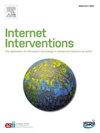通往社会联系的数字桥梁:对孤独和社会隔离的数字干预的系统回顾和荟萃分析
IF 4.1
2区 医学
Q1 HEALTH CARE SCIENCES & SERVICES
Internet Interventions-The Application of Information Technology in Mental and Behavioural Health
Pub Date : 2025-07-08
DOI:10.1016/j.invent.2025.100856
引用次数: 0
摘要
随着孤独和社会隔离成为紧迫的公共卫生问题,确定有效的干预措施至关重要。数字解决方案提供了灵活、可扩展和经济高效的方法,但其有效性仍不确定。本系统综述和荟萃分析评估了随机对照试验(rct)对减少孤独感和社会隔离的数字干预的影响。根据PRISMA 2020指南,我们检索了7个数据库和灰色文献(2022 -),并应用随机效应模型按干预类型汇总效应大小。共纳入了40项随机对照试验,涉及6062名参与者,其中三分之一集中在年轻人身上。36项研究对孤独感进行了评估,8项研究对社会孤立进行了评估。干预措施分为心理(k = 25)、社会(k = 4)、基于活动(k = 4)、基于机器人(k = 4)和减少社交媒体(k = 5)。心理干预——尤其是那些有群体或社交成分的干预——以及基于群体的活动和机器人宠物,在减少孤独感方面是有效的。相比之下,社会接触干预、自我引导的个人活动和会话机器人的影响有限。减少社交媒体的干预措施显示了潜在的好处,尽管结果在统计上并不显著。证据基础显示出中高偏倚风险、异质性和有限的长期随访。我们为未来的干预和研究提供了具体建议,包括利用数字技术增强个性化,使用数字工具指示非数字干预措施,系统地比较同一干预措施的数字和非数字版本,最重要的是,研究日益流行的人工智能驱动和类人社交聊天机器人的影响。本文章由计算机程序翻译,如有差异,请以英文原文为准。
Digital bridges to social connection: A systematic review and meta-analysis of digital interventions for loneliness and social isolation
As loneliness and social isolation emerge as pressing public health concerns, identifying effective interventions is essential. Digital solutions offer flexible, scalable, and cost-effective approaches, yet their effectiveness remains uncertain. This systematic review and meta-analysis assess the impact of randomized controlled trials (RCTs) on digital interventions to reduce loneliness and social isolation. Following PRISMA 2020 guidelines, we searched seven databases and grey literature (2022–) and applied random-effects models to pool effect sizes by intervention type. A total of 40 RCTs involving 6062 participants were included, with one-third focusing on younger individuals. Loneliness was assessed in 36 studies, while eight examined social isolation. Interventions were classified as psychological (k = 25), social (k = 4), activity-based (k = 4), robot-based (k = 4), and social media reduction (k = 5). Psychological interventions—especially those with group or social components—along with group-based activities and robotic pets, were effective in reducing loneliness. In contrast, social contact interventions, self-guided individual activities, and conversational robots showed limited impact. Social media reduction interventions suggested potential benefits, though results were not statistically significant. The evidence base exhibited moderate to high risk of bias, heterogeneity, and limited long-term follow-up. We provide specific recommendations for future interventions and research, including leveraging digital technologies for enhanced personalization, using digital tools for signposting non-digital interventions, systematically comparing digital and non-digital versions of the same intervention, and, most critically, examining the impact of increasingly popular AI-driven and humanlike social chatbots.
求助全文
通过发布文献求助,成功后即可免费获取论文全文。
去求助
来源期刊

Internet Interventions-The Application of Information Technology in Mental and Behavioural Health
Medicine-Health Informatics
CiteScore
6.50
自引率
9.30%
发文量
94
审稿时长
6 weeks
期刊介绍:
Official Journal of the European Society for Research on Internet Interventions (ESRII) and the International Society for Research on Internet Interventions (ISRII).
The aim of Internet Interventions is to publish scientific, peer-reviewed, high-impact research on Internet interventions and related areas.
Internet Interventions welcomes papers on the following subjects:
• Intervention studies targeting the promotion of mental health and featuring the Internet and/or technologies using the Internet as an underlying technology, e.g. computers, smartphone devices, tablets, sensors
• Implementation and dissemination of Internet interventions
• Integration of Internet interventions into existing systems of care
• Descriptions of development and deployment infrastructures
• Internet intervention methodology and theory papers
• Internet-based epidemiology
• Descriptions of new Internet-based technologies and experiments with clinical applications
• Economics of internet interventions (cost-effectiveness)
• Health care policy and Internet interventions
• The role of culture in Internet intervention
• Internet psychometrics
• Ethical issues pertaining to Internet interventions and measurements
• Human-computer interaction and usability research with clinical implications
• Systematic reviews and meta-analysis on Internet interventions
 求助内容:
求助内容: 应助结果提醒方式:
应助结果提醒方式:


